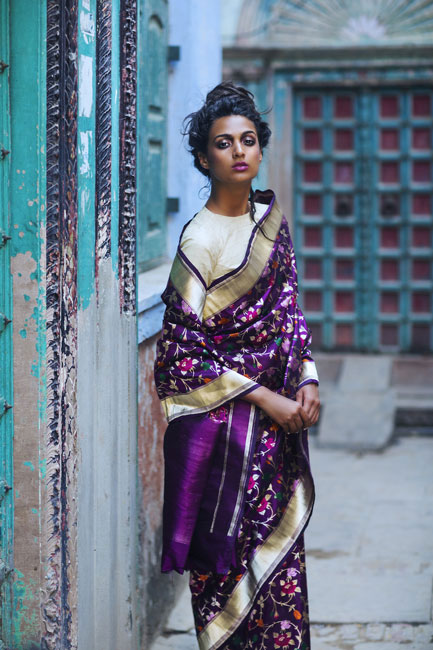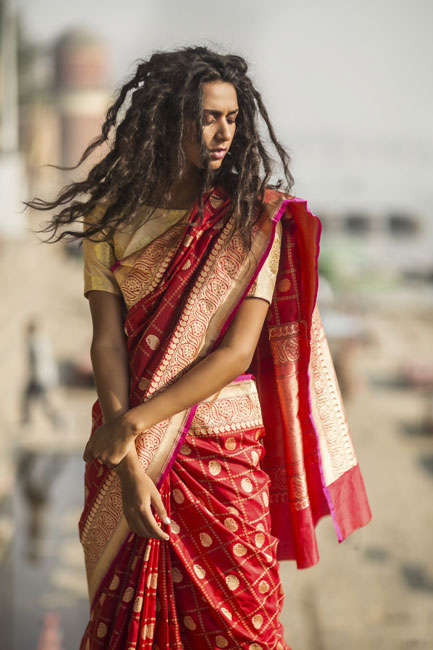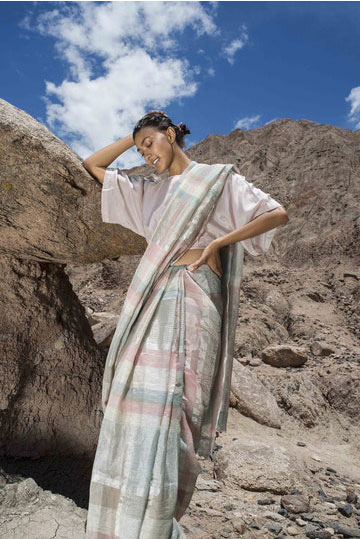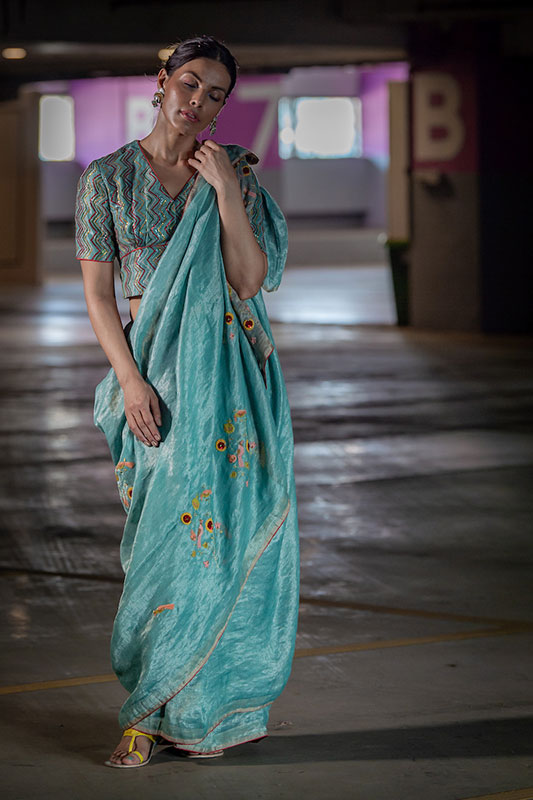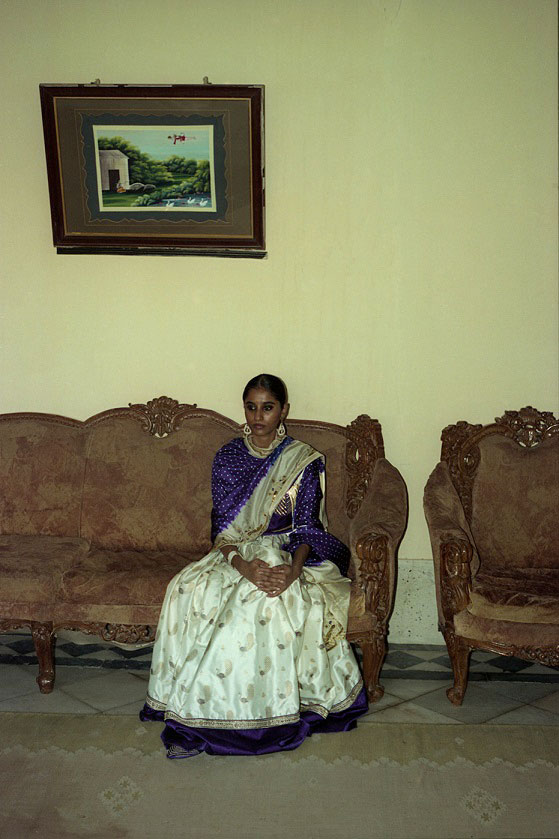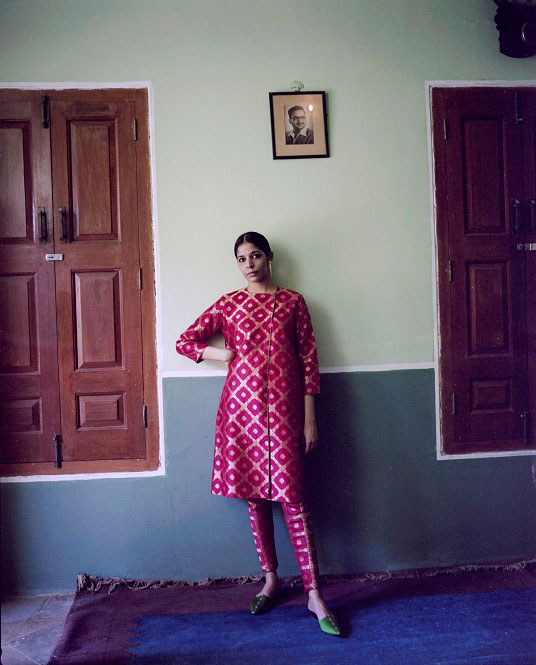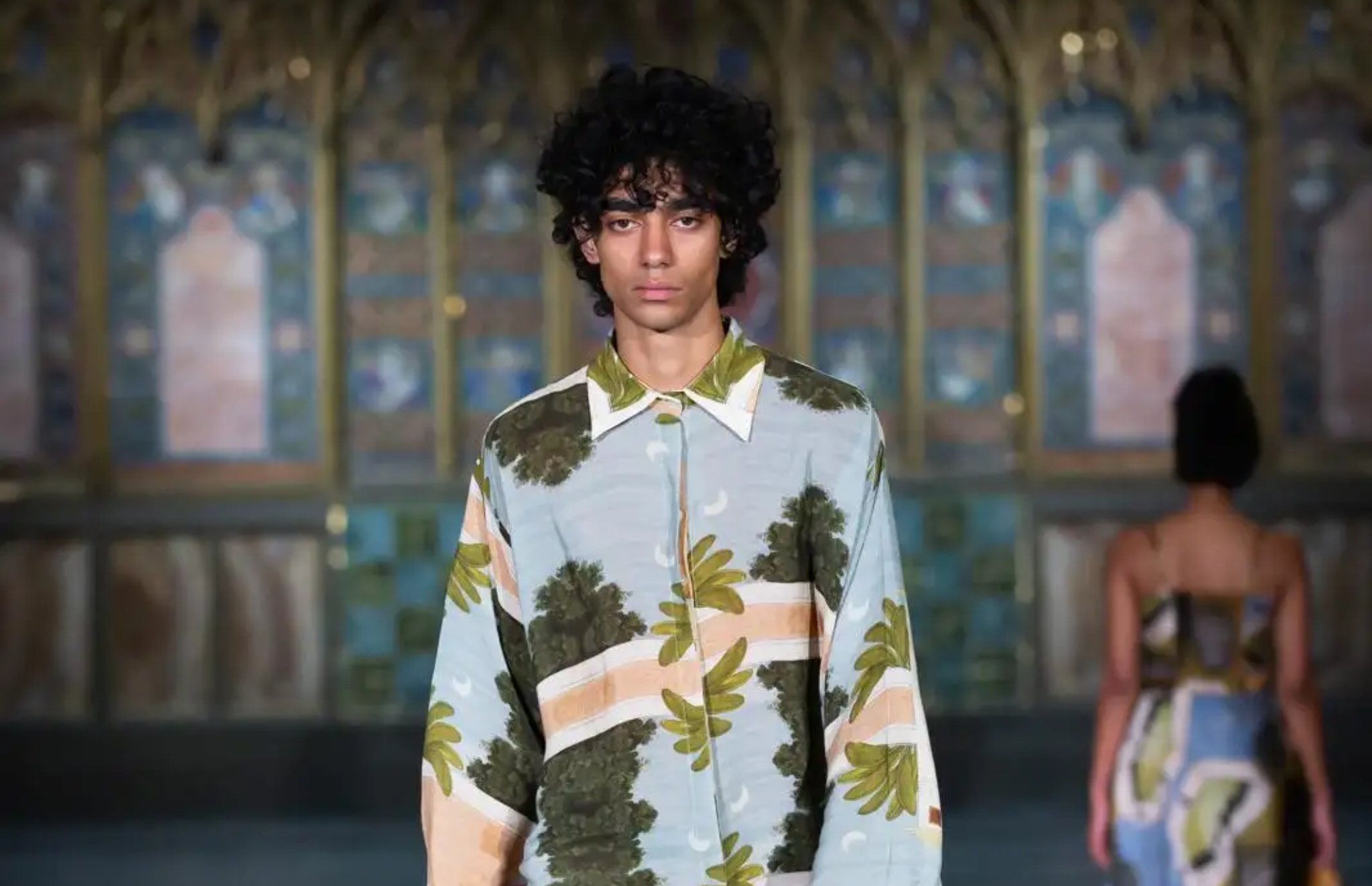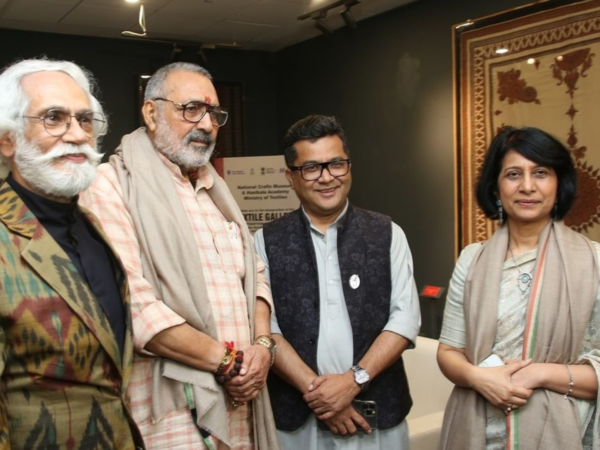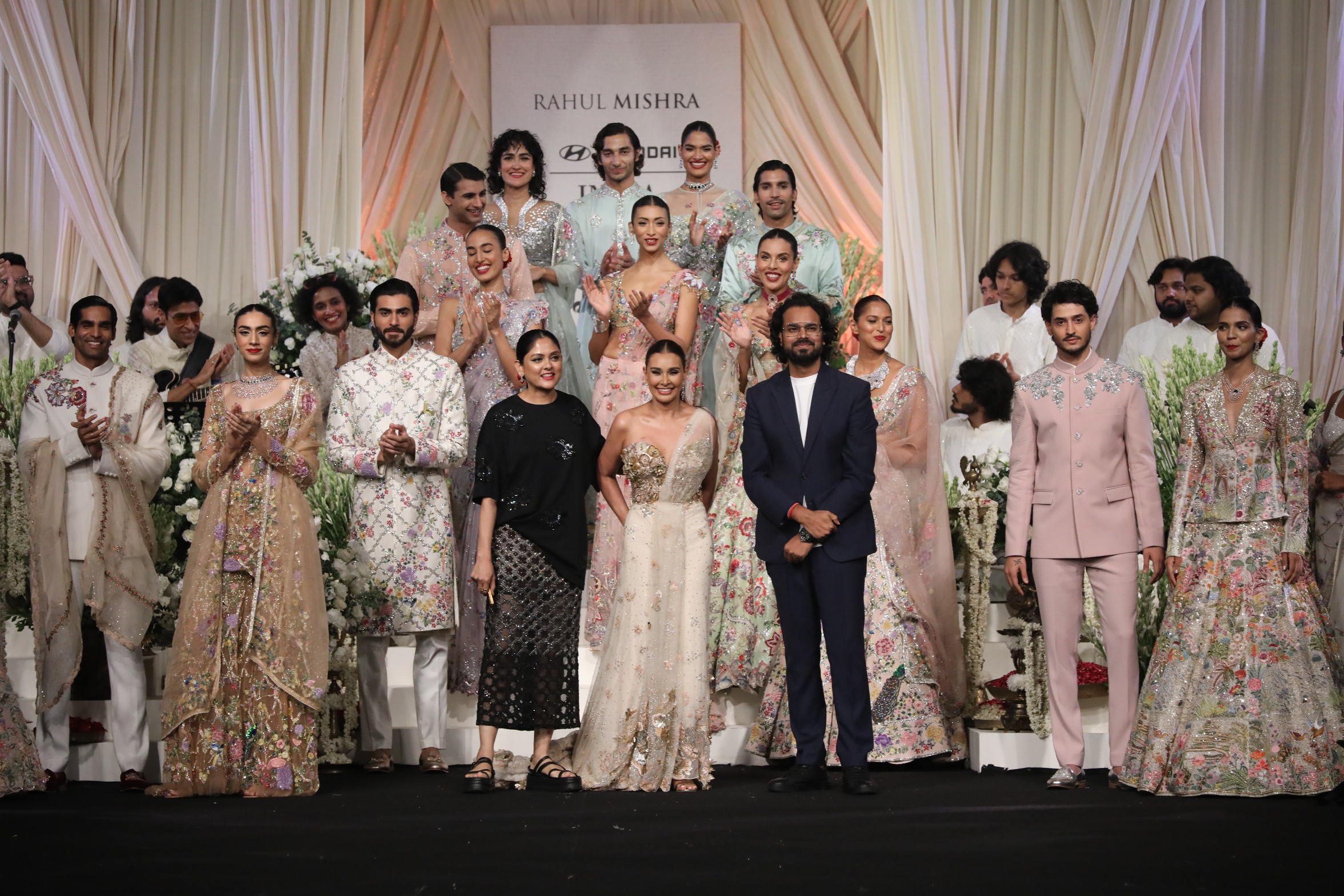What is handloom?
In very simplistic understanding; any fabric or a piece of cloth that is woven out of hand-spun yarns on manually operated looms is a handloom.
Handlooms are an important craft product and comprise the largest cottage industry of the country. Millions of looms across the country are engaged in weaving cotton, silk and other natural fibres. There is hardly a village where weavers do not exist, each weaving out the traditional beauty of India’s own precious heritage.
Be it tant and dhaka from West Bengal, jacquards from Benaras, ikat from Orissa and Andhra Pradesh, chanderi and maheshwari from Madhya Pradesh and pashmina from Kashmir, the Indian designers are using more and more of these handloom textiles in their seasonal creations. In fact post Covid-19 the designers, both eminent and upcoming have taken to using handloom textile more aggressively. If fashion designers have taken the pledge to ‘Go Handloom’, the fashionistas and the celebrities too have joined in to buy Handloom.
Tilfi is one such brand that is in rage these days. In 2013 while on a holiday in Banaras with his wife Aditi and brother Ujjwal, a path-breaking conversation of Udit with a master weaver led to the formation of Tilfi- the label. Inspired to join the family business, the three founders left their established international careers and started Tilfi with the aim of writing a new chapter in the glorious history of Banarasi textiles. Reaching out to customers around the world directly, with a constant focus on innovation and relentless attention to quality, Tilfi endeavours to take the intricacy, charm, elegance and heritage of the finest Banarasi craftsmanship to greater heights and to the rest of the world.
The name Tilfi is actually a type of technique in Banarasi weaving, where three meenakari yarns run continuously without a break. The three yarns of Tilfi reflect the brand’s three principles – Pure, Handmade and Banaras.
Udit Khanna says, “Many of our experiments have been around design. Our Kashi saree with the ghat-scape along its borders was one such experiment- an unconventional pattern in a traditional weave for a striking result. We’ve also experimented with traditional dyeing techniques in our khadi georgette and spun silk sarees. Tie-and-dye, Shibori, hand-painted patterns and even Kutchi Bandhani have resulted in a beautiful amalgamation of our arts. In our stitched clothing, we’ve chosen to move beyond standard lehengas and anarkalis and have experimented with Banarasi jackets in modern silhouettes.”
Mumbai-based designer Anavila Misra believes in creating products that are true to her name (‘Anavila’ in Sanskrit translates to pure). Her eponymous brand was born in 2011 with the launch of a simple yet stunning collection of linen saris, serving as a tribute to India’s rich and diverse textile heritage.
For Anavila, it has always been about normalising the sari as an everyday garment for the modern woman, instead of categorising it as ‘occasion wear.’ Anavila Studios working with her signature linen that is woven with fine zari and khatwa work, presented the ‘Dhanak’ collection that was apt for festivities.
About her love affair with linen Anavila says, “The quality of the yarn was brilliant and I fell in love with its texture, and how it lends itself to beautiful garments. It is coarse and grainy, yet everything about it is luxurious. The comfort and fluidity it provides to the body is divine. People associate luxury with sheen and lustre, and I wanted to change that perception.”
‘Mindful consumption comes from mindful creation’ is the tagline of Anavila’s brand, and she swears by it. “As a designer who creates garments, it’s important to create only as much as is required. We work closely with our customer to produce only as many garments that are needed, so that there is no wastage. Sustainability is a slow process, it requires constant commitment,” she says.
As a brand with a conscience, Anavila also believes in creating sustainable livelihoods for her artisans. Today, she works with close to One fifty to Two hundred weavers across craft clusters in India, and there are close to seventy who work directly with her in Gurgaon and Mumbai.
Raw Mango has always demonstrated creative visions, and explorations with textiles and crafts that have been innovative yet varied, season after season. Sanjay Garg’s festive collection “Moomal” revealed design sensibilities that transported the audience to his home state of Rajasthan, which is often considered as the craft soul of India.
Inspired by heritage and deep-rooted in Indian culture, the collection took the audience through a trip down Sanjay’s memory lane, beckoned with fond memories of Rajasthan. Part nostalgic and part re-imagined for the future as he was inspired by the Rajasthani folklore, the new festive collection was a contrast and harmony of colors, textiles and silhouettes.
Rajasthan encouraged Sanjay to turn his creative gaze on the bold colors and combinations of the region’s multiplicity of layers which lives across colors, textiles and motifs; explored on poshaks, lehengas, jackets and the graphically constructed cholis. The central motif- the peacock, dances amidst strong bold lines of textile and embroidery.
There was a harmony that Sanjay merged into the textiles, silhouettes and colours, while his newly introduced Bandhej techniques gave this traditional craft a distinct contemporary focus.
Inspired by classic and folk forms of Rajasthan, Sanjay Garg’s “Moomal” collection for his label ‘Raw Mango’ was a grand homage to his home state where tradition and craft have been the mainstay of life for centuries and was an amalgamation of textile and culture.
Text By Jaydeep Ghosh
Image Courtesy: Raw Mango, Tilfi and Anavila
Find out more about Brands:


